The holiday shopping season is the most competitive time of year. For small businesses, the challenge of competing with big-box marketing budgets is significant. Your customers are bombarded with ads on a national and global scale. Traditional advertising is broad and expensive, often feeling like shouting into a void. You need to reach shoppers not just when they are thinking about buying, but where they are deciding to spend their money.
The critical problem is a lack of precision. How do you deliver your message to a potential customer at the exact moment they are walking past your competitor’s store or standing just a few hundred feet from your own?
This is where holiday geofencing provides a data-driven, hyperlocal solution. By leveraging the power of location-based technology, you can stop wasting ad spend on people who are miles away and instead focus your budget on high-intent shoppers in your immediate area. This article provides actionable holiday geofencing campaign ideas, a step-by-step implementation guide, and the best practices required for small businesses to win the season. We will cover the core concepts of this technology and how you can apply it immediately to drive real, measurable foot traffic.
Foundational Concepts: What is Holiday Geofencing and Why Use It?

Before launching a campaign, it is critical to understand the technology. Many business owners are familiar with the term but not the mechanics. A successful holiday geofencing strategy is built on a solid technical foundation.
What is geofencing technology?
At its most basic, geofencing is the use of location-based services to create a virtual, invisible boundary around a specific, real-world geographic area. Think of it as drawing a digital fence on a map. This “fence” can be as small as a single building or as large as an entire zip code.
This technology uses a few different data sources on a person’s mobile device to determine their location:
- GPS (Global Positioning System): The most accurate, satellite-based signal.
- Wi-Fi: Uses the location of known Wi-Fi networks to triangulate a position, which is very effective in dense urban areas.
- Cellular Data: Uses the device’s distance from cell towers.
- RFID (Radio Frequency Identification): A less common method for this type of marketing, more often used for asset tracking.
When a potential customer’s smartphone enters or exits one of your pre-defined geofences, a “trigger” is activated. This trigger is the action you want to happen. Most often for a holiday geofencing campaign, this action is serving a targeted mobile ad or sending a push notification from your store’s app.
For example: You draw a geofence around a 500-meter radius of your competitor’s store. When a person who fits your customer profile (e.g., “women 30-50 interested in home goods”) enters that fence, your ad platform is instantly notified. It can then show them your ad: “Still shopping? Get 20% off at [Your Store], just two blocks away.” This is the power of holiday geofencing.
What are the benefits of holiday geofencing?
The holiday season is defined by high costs and high competition. Holiday geofencing directly addresses this by offering several key, data-driven benefits.
- Hyperlocal Targeting: This is the primary advantage. You are not targeting a city; you are targeting a city block. You can focus your budget only on people who are physically in a position to visit your store right now. This eliminates ad waste.
- Increased Foot Traffic: Geofencing is one of the few digital marketing strategies with a direct, measurable link to in-store visits. Platforms can track a “conversion” not as a click, but as a person who saw your ad and then physically walked into your store’s geofence.
- Cost-Effectiveness: Because your audience is so specific, your ad spend is hyper-efficient. You are not paying for impressions served to people who are at home, 20 miles away. This allows small businesses to compete with larger budgets by being smarter, not richer.
- Competitive Advantage (Geo-Conquesting): This is a key tactic we will explore. Holiday geofencing allows you to identify your competitors’ customers and send them a better offer while they are literally on your rival’s property.
- Improved Data and Customer Insights: A holiday geofencing campaign provides invaluable business intelligence. You can learn which locations drive the most traffic, what times of day are most effective, and what offers get the best response. This data helps you optimize your holiday geofencing efforts in real-time and plan for next year.
The value proposition is simple: Holiday geofencing stops you from guessing and allows you to target real people in real-world locations at the most critical moment of their shopping journey.
Geofencing vs. Beacon Technology: A Critical Distinction
A common point of confusion for small businesses is the difference between geofencing and beacons. Using the wrong one for your holiday geofencing goal will lead to poor results.
- Holiday Geofencing (The “Macro” Tool):
- Technology: GPS, Wi-Fi, Cellular.
- Range: Large areas (e.g., 50 meters to 50,000 meters).
- Use Case: Drawing customers into your store. It is an “outdoor” or “competitor-focused” technology.
- Analogy: It is a digital billboard or a sign-spinner outside your store, but it only appears to the exact people you want.
- Beacon Technology (The “Micro” Tool):
- Technology: Bluetooth (Bluetooth Low Energy or BLE).
- Range: Very small areas (e.g., 1 meter to 30 meters).
- Use Case: Interacting with customers already inside your store. It requires physical, battery-powered “beacon” hardware that you place on your shelves.
- Analogy: It is an in-store salesperson. When a customer with your app walks into the shoe aisle, a beacon can trigger a push notification: “Welcome! All boots are 25% off today.”
For most small businesses, a holiday geofencing strategy is the place to start. Its primary goal is acquisition and driving foot traffic from the outside world. Beacons are for in-store optimization and are most effective if you already have a popular, dedicated mobile app.
6 Actionable Holiday Geofencing Campaign Ideas

Now, let’s move from theory to practical application. Here are six field-tested holiday geofencing campaign models that you can adapt for your small business this season. Each targets a specific customer behavior.
Idea 1: The “Geo-Conquesting” Campaign
This is the most aggressive and often most effective holiday geofencing strategy. Instead of just promoting your store, you directly target your competitors’ locations to intercept their customers.
- Concept: You set up geofences around your direct competitors’ physical storefronts. This could be the local rival down the street, the big-box store in your category (like a Best Buy or Target), or even the entire shopping mall where your competitors are located.
- Offer: The offer must be compelling enough to make a shopper change their plans. A simple “we exist” ad is not enough. You must provide a clear, superior value proposition.
- A specific discount (e.g., “20% off”)
- A value-add (e.g., “Free gift wrapping”)
- A convenience factor (e.g., “No lines, in-stock now”)
- Ad Copy Example (for a boutique targeting a mall):
- Headline: Shopping at the Mall?
- Body: Don’t fight the crowds. Get a better deal at [Your Store]. Show this ad for 20% off any purchase. We’re just 5 minutes away.
- CTA: Get Directions
- Ad Copy Example (for a local restaurant targeting a chain):
- Headline: Waiting for a Table?
- Body: Skip the wait! [Your Restaurant] has immediate seating and a 2-for-1 holiday drink special. Just 3 blocks away.
- CTA: Call to Reserve
This type of holiday geofencing works because it targets customers who have already demonstrated high purchase intent. They are already out shopping for your exact product or service. Your job is to simply give them a better reason to shop with you.
Idea 2: The “Welcome Mat” Campaign
This is the most fundamental holiday geofencing campaign. It focuses on capturing the “low-hanging fruit”: the passive foot traffic that passes by your own store every day.
- Concept: You set up a tight geofence around your own physical location. The key here is the radius. You must ask: “What is a good geofencing radius?” The best-practice answer is a 4-5 minute walking distance in a dense urban area, or a 4-5 minute driving distance in a suburban area. Any larger, and the “stop in now” message loses its urgency.
- Offer: The offer should be low-friction and high-value, designed to trigger an impulse stop.
- “Free sample”
- “Free coffee with purchase”
- “A small, free gift”
- Ad Copy Example (for a coffee shop):
- Headline: You’re Just Steps Away!
- Body: Warm up at [Your Coffee Shop]! Stop in right now and get a free holiday cookie with any latte purchase.
- CTA: View Menu
- Ad Copy Example (for a retail store):
- Headline: Don’t Just Walk By!
- Body: You’re right outside [Your Store]. Come in and see our holiday collection and get a free [Sample/Gift] with any purchase.
- CTA: See Store Hours
This holiday geofencing strategy is about converting awareness into action. It targets people who may know you exist but need a small, immediate nudge to make the turn into your doorway.
Idea 3: The “Complementary Partner” Campaign
This is a more sophisticated holiday geofencing tactic that relies on strategic partnerships, even informal ones. The goal is to find where your ideal customer goes before or after they would need your product.
- Concept: You identify non-competing businesses that share your target audience and set up geofences around their locations. This builds a profile of your customer’s journey.
- Example Scenarios:
- A local toy store geofences the “Santa’s Village” or holiday photo-op at the local park.
- A high-end restaurant geofences the local theater during performances of The Nutcracker or A Christmas Carol.
- A pet store geofences local veterinarian clinics, groomers, or popular dog parks.
- A day spa geofences a nearby fitness center or yoga studio.
- Offer: The offer should feel relevant to the location they are in.
- Ad Copy Example (for the toy store):
- Headline: Just Visit Santa?
- Body: Now find the perfect gift to put under the tree. [Your Toy Store] is 1 mile away with [Hot Toy] in stock now.
- CTA: Get Directions
- Ad Copy Example (for the restaurant):
- Headline: Enjoying the Show?
- Body: Make your night perfect. Show your [Event] ticket at [Your Restaurant] after the show for a free holiday dessert.
- CTA: Reserve Your Table
This holiday geofencing campaign shows a deep understanding of your customer’s lifestyle, which builds brand affinity and captures them at a relevant moment.
Idea 4: The “Holiday Event” Campaign
This holiday geofencing strategy is time-based. It focuses on temporary, high-traffic events where your customers will be gathering in large numbers.
- Concept: You identify major local holiday events and draw temporary geofences around them, active only for the duration of the event.
- Target Entities:
- Christmas Tree lighting ceremonies
- Local holiday parades
- Small Business Saturday markets
- Farmers’ markets with holiday themes
- New Year’s Eve preparation zones (e.g., geofencing liquor stores, formal wear shops, or party supply stores on Dec. 30-31)
- Offer: This must be a “flash sale” or event-themed offer that creates extreme urgency.
- Ad Copy Example (for a local pub):
- Headline: Cold at the Parade?
- Body: Warm up at [Your Pub]! We’re 1 block off the parade route. Show this ad for $5 Hot Toddies and spiked cocoa. Today only!
- CTA: Get Directions
- Ad Copy Example (for Small Business Saturday):
- Headline: Shopping Small Today?
- Body: Thank you for supporting local! Celebrate Small Business Saturday at [Your Store] and get 30% off your entire purchase.
- CTA: See Our Deals
This holiday geofencing tactic allows you to tap into a massive, concentrated audience for a very short, specific, and high-intent period.
Idea 5: The “Last-Minute Shopper” Campaign
We all know this person. This holiday geofencing campaign targets the psychology of the stressed, last-minute shopper in the final 72 hours before Christmas or another major holiday.
- Concept: You run this campaign exclusively from December 22nd to 24th. You target high-traffic retail zones, shopping malls, and even post offices (where people are shipping last-minute). Your messaging shifts from “discovery” to “problem-solving.”
- LSI Keywords: Your ad copy and landing page should be optimized for related “last-minute” keywords. Focus on promoting “last-minute Christmas gifts,” “e-gift cards,” and “in-store pickup” (BOPIS: Buy Online, Pickup In-Store).
- Offer: The offer is not a discount. The offer is speed, convenience, and salvation.
- Ad Copy Example (for any retail):
- Headline: Forgot a Gift?
- Body: We’ve got you covered. [Your Store] is open until 10 PM. Grab an instant e-gift card or use our free in-store pickup.
- CTA: Shop Gift Cards
- Ad Copy Example (for a spa or service):
- Headline: Still Need a Gift?
- Body: Give the gift of relaxation. Send an instant e-gift card for [Your Spa] right from your phone. The perfect last-minute gift.
- CTA: Buy Instant Gift Card
This holiday geofencing strategy solves a high-stress pain point. You become the hero for the last-minute shopper, which builds incredible brand loyalty.
Idea 6: The “Post-Visit Retargeting” Campaign
This is a more advanced holiday geofencing campaign that combines geofencing with audience retargeting. This is for the customer who came close but did not convert.
- Concept: This campaign has two parts.
- Audience Collection: You set up geofences around your store and your competitors’ stores, just like in Ideas 1 and 2. But instead of only serving ads, your main goal is to capture the “Device IDs” of everyone who enters those zones.
- Retargeting: For the next 3-7 days, you serve display or social media ads to that specific audience (people you know were physically out shopping).
- Mechanism: This works by building a custom audience list.29 You are not targeting them in the location, but because they were in the location. This allows you to stay top-of-mind after they have gone home to think about their purchase.
- Offer: This is your “second chance” offer. It can be a reminder or a slightly better deal to pull them back.
- Ad Copy Example (display ad shown 2 days later):
- Headline: Still Thinking It Over?
- Body: You recently visited [Retail Area]. That [Product] you were looking at is waiting for you. Come back to [Your Store] this week and get an extra 10% off.
- CTA: Get Your Coupon
This holiday geofencing strategy recognizes that not all purchases are immediate. It uses location data to build a high-intent audience that you can market to for days to come, maximizing the value of your initial ad spend.
How to Set Up Your First Holiday Geofencing Campaign

Launching a holiday geofencing campaign may seem complex from a technical standpoint, but most modern ad platforms have streamlined the process. Here is a simplified, five-step guide for small business owners.
Step 1: Define Your Objective & KPIs
You cannot measure success if you have not defined it. Before you open any ad platform, you must answer one question: “What is the specific goal of this holiday geofencing campaign?”
Your objective must be clear and measurable.
- Bad Objective: “I want more business.”
- Good Objective: “I want to increase in-store foot traffic by 20% during Black Friday week.”
- Good Objective: “I want to generate 50 in-store coupon redemptions from my geo-conquesting campaign.”
From this objective, you get your Key Performance Indicators (KPIs). These are the data points you will watch.
- Store Visit Conversions: The most important metric. This is the number of people who saw your ad and then physically visited your store.
- Click-Through Rate (CTR): The percentage of people who saw your ad and clicked it (e.g., to get directions or visit your site).
- Cost-Per-Visit (CPV): The total ad spend divided by the number of store visits. This tells you exactly how much it costs to get one person in the door.
- Conversion Rate: The percentage of store visitors who made a purchase.
Start with one, simple objective for your first holiday geofencing campaign.
Step 2: Choose Your Geofencing Platform
You do not need to buy complex, standalone software. You can run a holiday geofencing campaign from platforms you likely already use.
- Google Ads: You can set “Location Targeting” in your campaigns. This allows you to target people “in or regularly in” a specific radius around an address. This is the most common way to do it.
- Facebook/Instagram Ads (Meta): When creating an ad set, you can target people “in this location” and “drop a pin” on a map, setting a radius as small as one mile.
- Third-Party Platforms: For more advanced tactics (like in-app push notifications or tracking device IDs), you would use a dedicated geofencing provider. However, for most small businesses, Google and Meta are the best places to start your holiday geofencing journey.
Step 3: Define Your Geofence and Audience
This is where you draw your map. In your chosen ad platform, you will physically select your locations.
- Draw Your Fences: Drop pins on your store, your competitors’ stores, and any event or partner locations.
- Set Your Radius: As discussed, be precise. A 4-5 minute walking or driving radius is optimal. A fence that is too large (e.g., 20 miles) defeats the purpose of holiday geofencing and wastes money.
- Layer Your Audience: This is a critical step. Do not just target everyone in the geofence. You must layer your customer demographics on top. For example:
- Location: Is in a 1-mile radius of [Competitor Store]
- AND
- Demographic: Is Female, 25-45 years old
- AND
- Interest: Is interested in “Yoga” and “Fitness
This combination ensures your holiday geofencing ad is only shown to a person who is both in the right place and is the right type of customer.
Step 4: Craft Your Compelling Offer and Call-to-Action (CTA)
Your ad creative for a holiday geofencing campaign is different from a standard ad. It must be relevant to the location and create urgency.
- Acknowledge the Context: Use words like “You’re nearby,” “Just steps away,” or “Shopping in [Neighborhood]?” This makes the ad feel personal and immediate.
- Create Urgency: Use time-sensitive language. “Today Only,” “While You’re Here,” “Flash Sale.” The goal is to interrupt their current plan.
- Have a Clear Call-to-Action (CTA): Do not be vague. Tell them exactly what to do next.
- Good CTAs: “Get Directions,” “Show This Ad In-Store,” “Call Now,” “Redeem Offer.”
- Bad CTAs: “Learn More,” “Click Here.”
The user is on their phone, walking or driving. They have seconds to understand your message. Be clear, concise, and direct.
Step 5: Monitor, A/B Test, and Optimize
A holiday geofencing campaign is not a “set it and forget it” tool. The holiday season moves fast, and you must analyze your data daily.
- Monitor: Check your KPIs every morning. Where are your visits coming from? Which geofence is performing best?
- A/B Test: Run two versions of an ad at the same time to see what works.
- Test 1: Offer “20% Off” vs. “Free Gift with Purchase”
- Test 2: Ad Copy “You’re Nearby” vs. “Beat the Mall Crowds”
- Optimize: After 2-3 days, you will have a clear winner. Pause the losing ad and put all of your budget into the winning ad. If your “Geo-Conquesting” fence is driving all your sales, shift more money to that campaign.
Data-driven optimization is what separates a successful holiday geofencing campaign from a failed one.
Win the Holiday Season with Hyperlocal Precision
For a small business, the holiday shopping season can feel like a battle against giants. You cannot outspend them, but you can outsmart them. Holiday geofencing is the tool that allows you to do it.
It levels the playing field by trading a massive budget for precision. Instead of a “spray and pray” approach, holiday geofencing allows you to deliver a perfect, relevant message to a high-intent customer at the exact moment of decision. This is the power of true, data-driven mobile marketing.
By implementing these targeted holiday geofencing campaign ideas—targeting your competitors, welcoming nearby traffic, and capturing last-minute shoppers—you can drive real, measurable foot traffic into your store. You can stop hoping for customers and start intercepting them.
Do not waste another dollar advertising to people who are not in a position to buy. Start planning your geofences for Black Friday, Small Business Saturday, and the final Christmas rush today. Your most successful holiday season is waiting.






